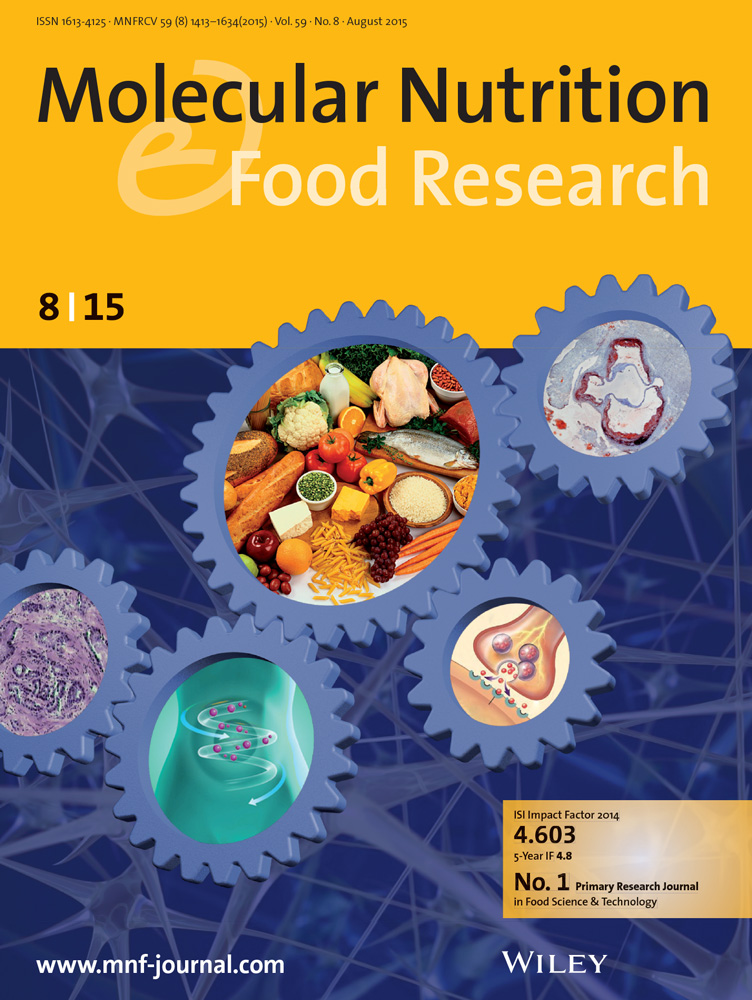野生与栽培:对未来粮食安全的二倍体马铃薯品种冈田茄的营养优势评估。
IF 4.2
2区 农林科学
Q1 FOOD SCIENCE & TECHNOLOGY
引用次数: 0
摘要
土豆是全球主食,但其营养潜力未得到充分利用。本研究评估了野生二倍体马铃薯Solanum okadae (S. okadae)的生化和营养成分,并将其与栽培的S. tuberosum“Celandine”进行了比较,以评估其在饮食改善和生物强化方面的潜力。采用标准的生化分析方法,通过ICP-MS分析近似成分、维生素、矿物质含量,通过HPLC/FD分析氨基酸含量。冈田花的碳水化合物含量(18.47 g/100 g)和蛋白质含量(2.1 g/100 g)均高于tuberosum。矿物分析显示,冈田葵中钾(30.10 g/kg)、钙(2.92 g/kg)、铁(28.42 ppm)和锌(21.31 ppm)含量显著高于其他植物。它还含有更多的维生素C(10.69毫克/100克)和罕见的维生素B12(0.28毫克/100克)。氨基酸谱分析显示亮氨酸(5.62 g/kg)和赖氨酸(5.46 g/kg)含量较高,表明冈田葵的蛋白质质量较高。其较低的水分含量(75.9 g/100 g)表明采后稳定性更好,而最低的反式脂肪(< 0.02 g/100 g)有助于心血管健康。冈田葵是一种营养丰富的马铃薯替代品,提供更高的必需常量营养素,维生素和矿物质。它具有育种计划和生物强化的潜力。进一步的研究应探索其大规模种植和适应性,以增强全球粮食安全。本文章由计算机程序翻译,如有差异,请以英文原文为准。
Wild Versus Cultivated: Assessing the Nutritional Superiority of a Diploid Potato Species Solanum okadae for Future Food Security.
Potatoes are a global staple, yet their nutritional potential is underutilized. This study evaluates the biochemical and nutritional composition of Solanum okadae (S. okadae), a wild diploid potato species, compared to the cultivated S. tuberosum "Celandine," assessing its potential for dietary improvement and biofortification. Standard biochemical assays were used to analyze proximate composition, vitamins, mineral content via ICP-MS, and amino acids via HPLC/FD. S. okadae exhibited higher carbohydrate (18.47 g/100 g) and protein (2.1 g/100 g) content than S. tuberosum. Mineral profiling revealed significantly higher potassium (30.10 g/kg), calcium (2.92 g/kg), iron (28.42 ppm), and zinc (21.31 ppm) levels in S. okadae. It also contained more vitamin C (10.69 mg/100 g) and an uncommon presence of vitamin B12 (0.28 mg/100 g). Amino acid profiling showed higher leucine (5.62 g/kg) and lysine (5.46 g/kg) levels, indicating S. okadae's protein quality. Its lower moisture content (75.9 g/100 g) suggests better postharvest stability, while minimal trans fat (< 0.02 g/100 g) supports cardiovascular health. S. okadae is a nutrient-dense alternative to cultivated potatoes, providing higher essential macronutrients, vitamins, and minerals. It holds potential for breeding programs and biofortification. Further research should explore its large-scale cultivation and adaptability to enhance global food security.
求助全文
通过发布文献求助,成功后即可免费获取论文全文。
去求助
来源期刊

Molecular Nutrition & Food Research
工程技术-食品科技
CiteScore
8.70
自引率
1.90%
发文量
250
审稿时长
1.7 months
期刊介绍:
Molecular Nutrition & Food Research is a primary research journal devoted to health, safety and all aspects of molecular nutrition such as nutritional biochemistry, nutrigenomics and metabolomics aiming to link the information arising from related disciplines:
Bioactivity: Nutritional and medical effects of food constituents including bioavailability and kinetics.
Immunology: Understanding the interactions of food and the immune system.
Microbiology: Food spoilage, food pathogens, chemical and physical approaches of fermented foods and novel microbial processes.
Chemistry: Isolation and analysis of bioactive food ingredients while considering environmental aspects.
 求助内容:
求助内容: 应助结果提醒方式:
应助结果提醒方式:


